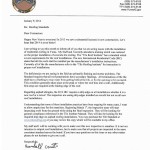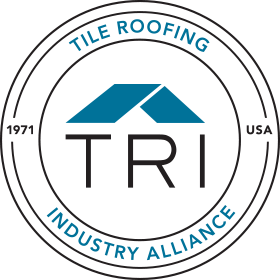The severity of weather conditions varies greatly across the United States. Severe wind in Florida is “normal”. Severe cold in Chicago, blazing heat in Phoenix? Normal. Drizzle in Seattle? Depressingly, consistently normal. But what if you install tile in a climate with very little rain, rare wind dustups and minimal precipitation during cold weather if it comes at all? Do you still have to meet the minimum standards? Yes.
The City of Yuma, AZ Community Development (Building Department), Eagle Roofing Products, Yuma ABC Supply and the TRI Training Program worked together with local contractors to bring understanding and change to some local practices that were not meeting minimum installation requirements. Progress was made after 6 City of Yuma Building Department officials attended a TRI Hands On Demonstration at the ABC Supply in Yuma. The mockup provided City Inspectors the opportunity to see various installation details at knee level and come to an understanding of what minimum specific requirements are in place and why. Roofing contractors understand the value of the practices, but some have simply not been practiced in Yuma.
 The City officials took what they learned back to City Hall and 60 days later sent this letter out to contractors. It essentially says (Editors interpretation) “We came, we saw and we learned. We recognize there are some historic local practices in place that do not meet the required minimum standards.” The letter goes on to cite 3 specific examples and states that beginning March 1st (2 months in the future at the time) the inspectors will be looking for: secondary flashings at penetrations; weather blocking at hips, ridges and terminations; and eave drip edge flashing on all installations.
The City officials took what they learned back to City Hall and 60 days later sent this letter out to contractors. It essentially says (Editors interpretation) “We came, we saw and we learned. We recognize there are some historic local practices in place that do not meet the required minimum standards.” The letter goes on to cite 3 specific examples and states that beginning March 1st (2 months in the future at the time) the inspectors will be looking for: secondary flashings at penetrations; weather blocking at hips, ridges and terminations; and eave drip edge flashing on all installations.
The TRI Moderate Climate Guide is not only the installation instructions used for all manufacturers; the manual has been reviewed by the ICC and given an Evaluation Report number. The minimum standards in the manual are the minimum standards. Period. In areas with more severe weather, contractors may adjust their own installation practices, and the building department may require a better practice demanded, in their opinion, by the local conditions.
The TRI Installer Certification is a classroom training. We teach and test an attendee’s ability to use the manual to determine the minimum standards and practices required for the various products, profiles and pitches. We also teach various options available to the installer within those minimum standards and ways to go beyond them to a more significant system. Regional practices affect those optional choices, but the minimum standards are fixed.
It is important to know the standards and ensure your work complies. Municipal building inspectors, roof consultants and home inspectors are learning the standards and are looking for them during their inspections. If you are winning jobs because you cut costs by installing substandard roofing, it may only be a matter of time before you learn a very frustrating lesson.
Great appreciation to the City of Yuma for their effort to understand and be understanding in this effort to improve outcomes on the projects within their jurisdiction.
